Vegetable Growing From Seed for Transplanting
Our gardener prefers vegetable growing from seed for transplanting ...
... extending the growing season and providing more choices ... His choices !
Starting vegetable seeds may be done in garden structures such as hotbeds or a greenhouse ...
... The transplants in our yard come from an indoor garden.
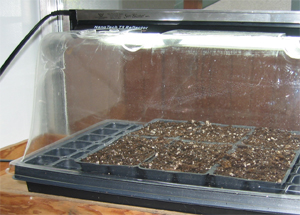
Direct Sow or Start Seeds Indoors ?
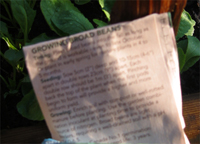

Seed companies include this information in seed catalogs
and on vegetable seed packages.
Look for Days to Maturity
in the how to grow vegetables information.
... sow direct when maturity is time from direct sowing.
... maturity from date of transplanting means start seeds prior to planting outdoors.
Cool weather vegetables ...
... spinach, radish, carrots are direct sow seeds
.
Warm weather and warm garden soil ...
... time for planting beans and parsnip seed directly into the backyard garden.
Growing cabbage, planting tomatoes, peppers and vining vegetbles like ...
... cucumber, melons and squash ...
... good candidates for seed starting indoors and moving seeding outdoors.
Starting seeds of berries and flower seeds are done the same way.
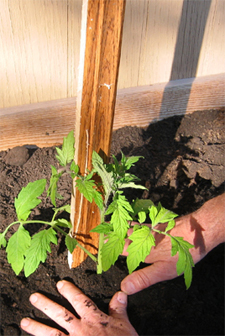
Growing From Seed for Transplanting ...
... Need a How To Gardening Tip ?
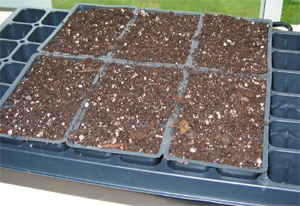
The necessities for starting vegetables seeds are ...
... Earth ... Wind ... & Fire ... Water too !
Earth ... Our gardener uses a commercial seed starting sterile potting mix
... Some use non organic matter like pearlite or vermiculite
... A DIY seed starting mix recipe
1 scoop sand
1 scoop fine peat moss
1 scoop organic gardening compost / soil
1/2 scoop vermiculite
sterilize this mix in the kitchen oven ... 70 minutes @ 210F
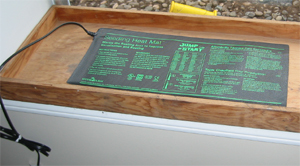
Wind ... Oxygen ... a must for seed germination and plant growth
... once the seedlings are growing a little breeze makes for tougher transplants
Fire ... a seedling heat mat under the grow tray speeds up seed germination
... artificial light after germination ... 14 to 18 hours per day.
Water ... dampen seed startig mix before filling pots
... keep moist by watering twice a day
... be sure pots drain well ... do not over water ... prevent poor germination and disease.
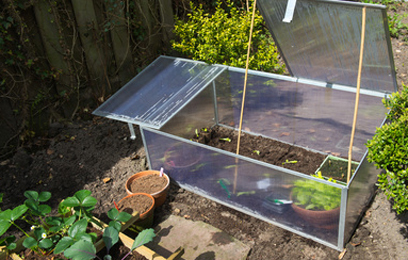
Growing From Seed ... Our gardener's top 10 Tips preparing for Transplanting.
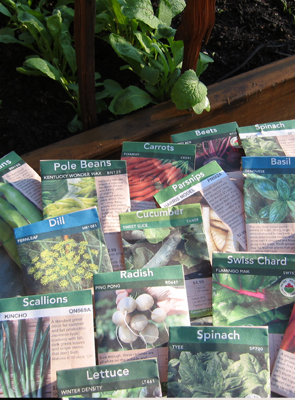
1) Vegetable Seeds What to Choose ?
Our gardener Chooses and Grows Vegetables he likes to eat.
He also starts seeds that are fresh and organic.
2) Seed starting Containers
Peat seed trays, with separate seed growin cells, are used in our indoor garden.
These are great for potting up if needed ...
... each seedling can be transplanted without disrupting the roots.
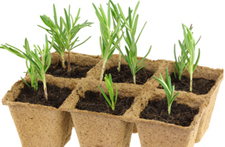
3) Timing for growing from seed ... When to start seed in an indoor garden ?
6 to 8 weeks prior to the last expected frost date is usual.
Balance this with Days to Maturity from transplanting
Be flexible ... Mother Nature has the last say in days to maturity.
4) Soil ... Use a high quality seed starting mix or potting soil ... keep it moist
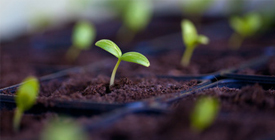
5) Plant vegetable seeds
three times the seed diameter deep
two or three seed per compartment
6) Thin to one plant per pot ... thin by snipping the extra seedlings at ground level
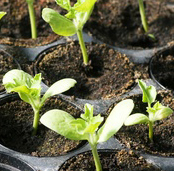
7) Provide light after seed germination
16 to 18 hours per day
Light should be close enough so vegetable plants do not have to reach.
8) Plant health ...
... once the first true leaves develop be sure the seedlings are dark green and healthy looking.
If leaves are yellowish monitor for over or under watering
Fertilize with a liquid organic fertilizer ... 20-20-20 ... be careful !
Root bound plants are not healthy !
Home grown or store bought transplants should have no flowers or fruit on them ...
... those with will yield poorly.
...
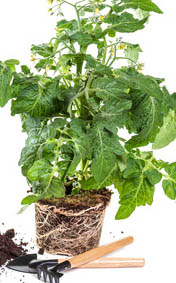
9) Harden off ...
... move transplants to a cold frame or acclimatize by gradual intoduction to outdoor conditions
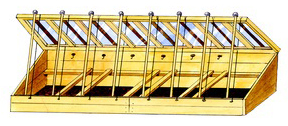
10) Transplant the seedlings into the garden ...
... do this on an overcast day and shelter the vegetable seedling if needed.
Water the seedling before and after the move to the garden ... a raised bed in our yard.
The peat pot should be broken in a few places to prevent the roots from being constricted.
Be careful the edge of the pot does not show above ground level ... remove a bit if needed.
Our gardener has been seen planting tomatoes differently ... Sideways !
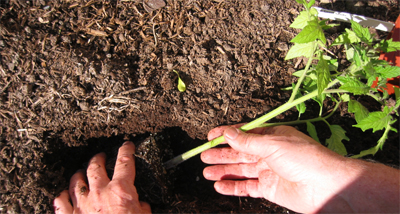
We, that is, We garden vegetables have seen our gardener's pleasure on transplanting day !
He says vegetable growing from seed for transplanting ...
... extends the growing season along with the raised garden beds
... provides healthier transplants than store bought
... allows him more and better choices.
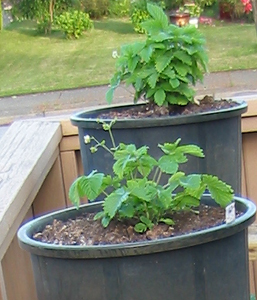
Alpine strawberries ... Priceless ... According to Himself !
Starting strawberry seeds .. indoor garden of course ! .. early January
Our balcony container garden was a great success last year.
Growing raspberries in containers already ... the alpine strawberries were a welcome addition.
Growing From Seed ... If you missed something return to top of page
